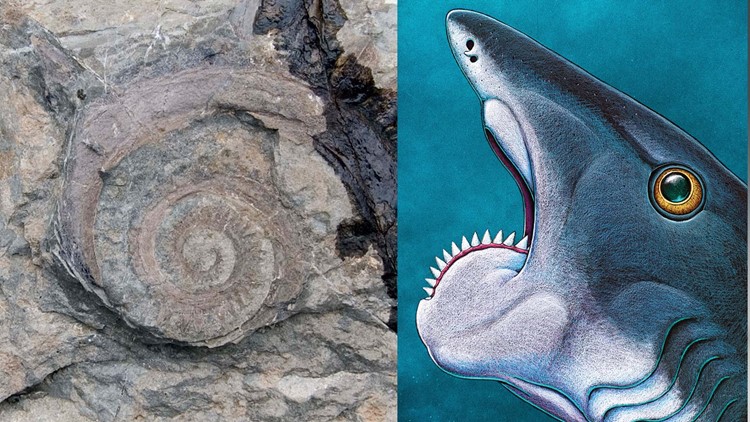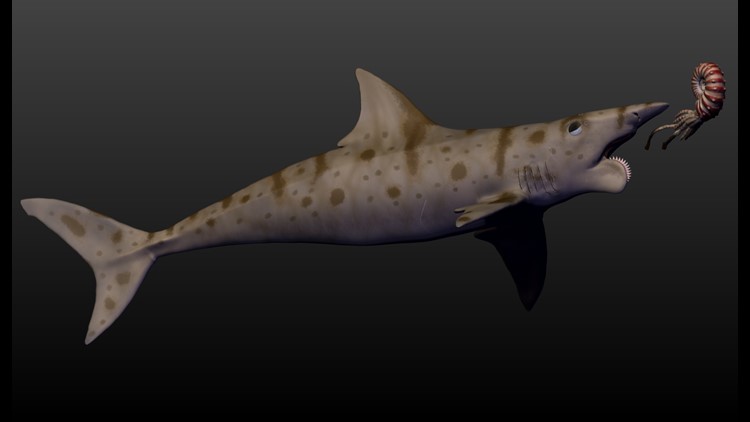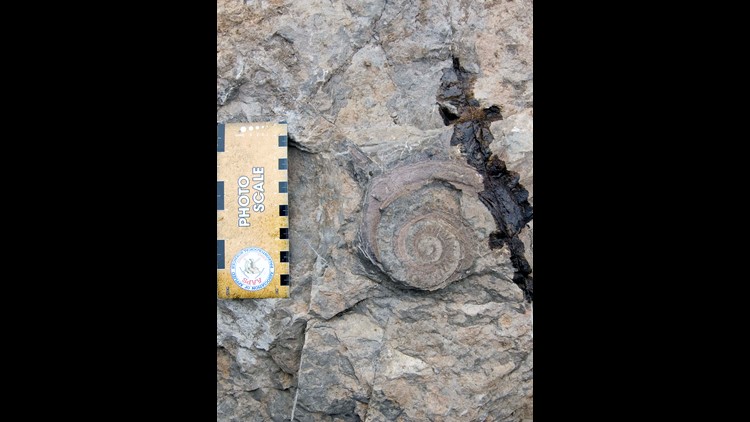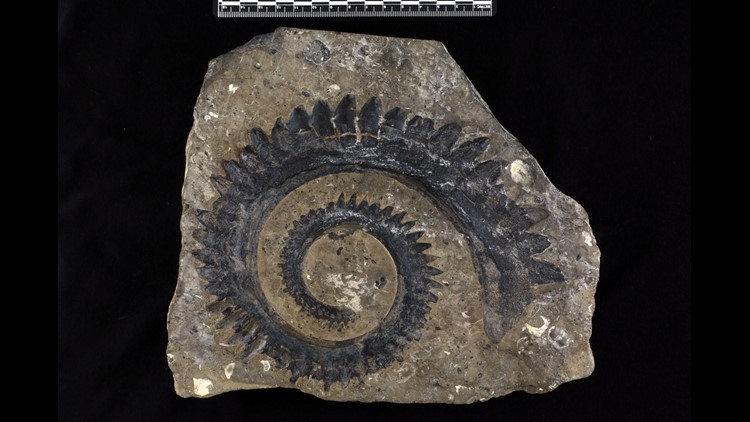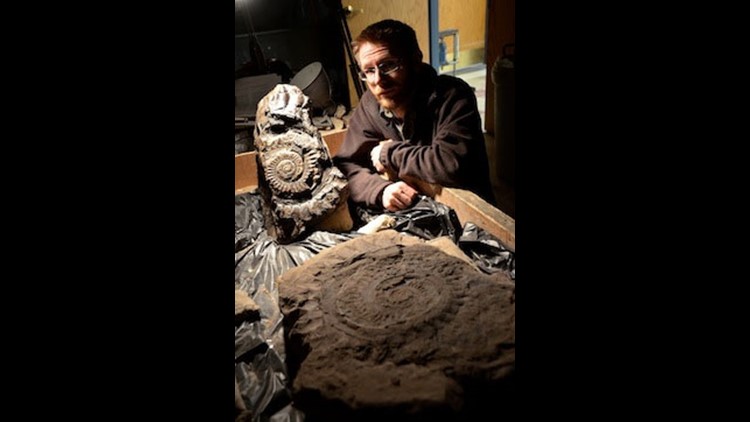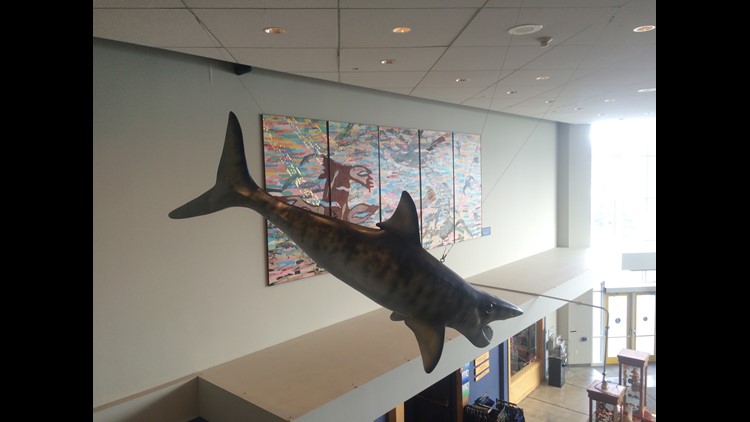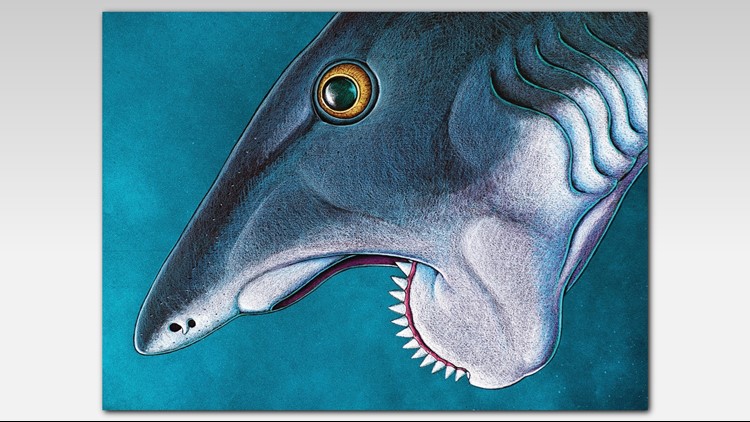POCATELLO - The Idaho Museum of Natural History has added to its already impressive collection of prehistoric shark fossils.
The newest fossil is a spiral of teeth from a Helicoprion - a prehistoric shark-like creature that lived some 270 million years ago.
The fossil was donated to the museum on the Idaho State University campus by Monsanto, which found it during mining operations in the Soda Springs area.
Measuring over eight inches in diameter, the fossil is a relic from one of the more peculiar-looking marine predators.
Nicknamed the "Buzzsaw Shark," for its unusual set of teeth, experts at ISU say the Helicoprion was the largest predator on earth at the time, during the late Palaeozoic Era.
The ancient shark grew up to 25 feet in length and swam the oceans that once covered eastern Idaho.
"Idaho is the best place on the planet to find these amazing fossils," museum director Leif Tapanila said in a statement. "We're very grateful to our partners in the region for sharing their discoveries so we can make them available to the public for many years to come."
Helicoprion fossils at Idaho State University
The Idaho Museum of Natural History boasts the largest collection of Helicoprion sharks in the world.
The public will get a chance to see the newest addition in the fall when the museum's Buzzsaw Sharks of Idaho exhibit opens in October. Officials say the exhibit has been on the road for the past five years, sharing Idaho's natural history with over half a million people across the United States.


